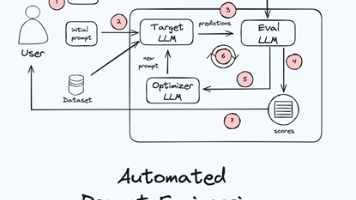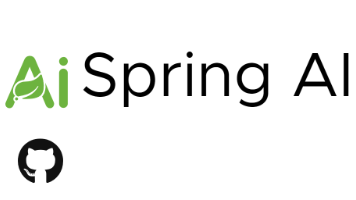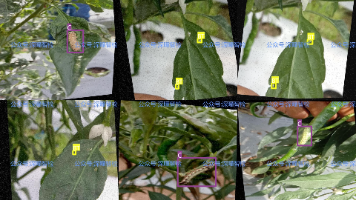AbsoluteLayout(绝对布局)
AbsoluteLayout 是 Android 中已废弃的布局方式,允许通过绝对坐标(x,y)定位子 View。虽然简单直观,但由于缺乏屏幕适配性,已被官方标记为 Deprecated。本文介绍了其核心属性(layout_x/layout_y)、XML 和代码实现方式,并对比了现代布局(如 ConstraintLayout)。通过示例展示了固定坐标定位的缺陷,强调应使用响应式布局替代。适合需要了
AbsoluteLayout 是 Android 开发中的一种 ViewGroup,用于通过绝对坐标(x, y)定位子 View。它的设计允许开发者精确指定子 View 在布局中的位置,但由于其缺乏灵活性和适配性,已被 Android 官方标记为 废弃(Deprecated),不推荐在现代开发中使用。Google 建议使用 ConstraintLayout 或其他现代布局(如 Jetpack Compose)替代。本教程基于 Android Studio(截至 2025 年 9 月,Koala 2024.1.1),详细讲解 AbsoluteLayout 的概念、属性、使用方法、示例代码以及为什么应避免使用,适合初学者和需要了解历史布局的开发者。
1. AbsoluteLayout 概念
- 定义:
AbsoluteLayout是一个 ViewGroup,允许开发者通过指定子 View 的绝对坐标(x, y)来定位,子 View 的位置相对于父容器左上角。 - 特点:
- 使用绝对像素或 dp 单位定位(如
layout_x和layout_y)。 - 简单直观,适合固定位置的简单布局。
- 已废弃:自 Android 1.5 起不推荐使用,API 1 引入,API 11(3.0)标记为 Deprecated。
- 使用绝对像素或 dp 单位定位(如
- 包:
android.widget.AbsoluteLayout。 - 局限:
- 不适配屏幕:不同屏幕尺寸和分辨率会导致 UI 错位。
- 缺乏灵活性:无法响应动态内容或屏幕方向变化。
- 性能无优势:现代布局(如 ConstraintLayout)更高效且功能强大。
2. AbsoluteLayout 核心属性
以下是 AbsoluteLayout 的常用 XML 属性(res/layout/ 中定义):
| 属性 | 适用对象 | 描述 | 示例 |
|---|---|---|---|
android:layout_x |
子 View | 指定子 View 的 X 坐标(水平位置) | android:layout_x="50dp" |
android:layout_y |
子 View | 指定子 View 的 Y 坐标(垂直位置) | android:layout_y="100dp" |
android:layout_width |
子 View | 子 View 宽度 | android:layout_width="wrap_content" |
android:layout_height |
子 View | 子 View 高度 | android:layout_height="wrap_content" |
android:padding |
AbsoluteLayout | 内边距 | android:padding="8dp" |
- 注意:
- 坐标
(0, 0)是父容器的左上角。 layout_x和layout_y支持dp、px等单位,但不推荐使用px(因设备密度差异)。- AbsoluteLayout 不支持相对定位或权重分配。
- 坐标
3. 使用 AbsoluteLayout
尽管 AbsoluteLayout 已废弃,以下展示其基本用法,供学习历史布局或特殊场景参考。
3.1 XML 布局中使用
以下是一个简单界面,使用 AbsoluteLayout 定位 TextView 和 Button。
-
布局文件(
res/layout/activity_main.xml):<?xml version="1.0" encoding="utf-8"?> <AbsoluteLayout xmlns:android="http://schemas.android.com/apk/res/android" android:layout_width="match_parent" android:layout_height="match_parent" android:padding="16dp"> <!-- TextView --> <TextView android:id="@+id/messageText" android:layout_width="wrap_content" android:layout_height="wrap_content" android:text="@string/message" android:textSize="20sp" android:layout_x="50dp" android:layout_y="100dp" /> <!-- Button --> <Button android:id="@+id/actionButton" android:layout_width="wrap_content" android:layout_height="wrap_content" android:text="@string/action" android:layout_x="50dp" android:layout_y="200dp" /> </AbsoluteLayout> -
资源文件(
res/values/strings.xml):<resources> <string name="app_name">AbsoluteLayout App</string> <string name="message">Hello, AbsoluteLayout!</string> <string name="action">Click Me</string> </resources> -
效果:
- TextView 位于坐标 (50dp, 100dp)。
- Button 位于坐标 (50dp, 200dp)。
- 问题:在不同屏幕上,位置可能错位(如小屏显示不全,大屏空隙过多)。
3.2 代码中使用
动态创建 AbsoluteLayout 和子 View:
package com.example.myapp
import android.os.Bundle
import android.widget.AbsoluteLayout
import android.widget.Button
import android.widget.TextView
import androidx.appcompat.app.AppCompatActivity
class MainActivity : AppCompatActivity() {
override fun onCreate(savedInstanceState: Bundle?) {
super.onCreate(savedInstanceState)
// 创建 AbsoluteLayout
val layout = AbsoluteLayout(this).apply {
layoutParams = AbsoluteLayout.LayoutParams(
AbsoluteLayout.LayoutParams.MATCH_PARENT,
AbsoluteLayout.LayoutParams.MATCH_PARENT,
0, 0
)
setPadding(16, 16, 16, 16)
}
// 创建 TextView
val textView = TextView(this).apply {
id = R.id.messageText
text = getString(R.string.message)
textSize = 20f
layoutParams = AbsoluteLayout.LayoutParams(
AbsoluteLayout.LayoutParams.WRAP_CONTENT,
AbsoluteLayout.LayoutParams.WRAP_CONTENT,
50, 100 // x=50px, y=100px
)
}
// 创建 Button
val button = Button(this).apply {
id = R.id.actionButton
text = getString(R.string.action)
layoutParams = AbsoluteLayout.LayoutParams(
AbsoluteLayout.LayoutParams.WRAP_CONTENT,
AbsoluteLayout.LayoutParams.WRAP_CONTENT,
50, 200 // x=50px, y=200px
)
setOnClickListener {
textView.text = "Button Clicked!"
}
}
// 添加到 AbsoluteLayout
layout.addView(textView)
layout.addView(button)
// 设置布局
setContentView(layout)
}
}
- 警告:代码中使用
px单位会导致屏幕适配问题,推荐dp(需手动转换)。
4. AbsoluteLayout 与其他布局对比
| 布局类型 | 优点 | 缺点 | 使用场景 |
|---|---|---|---|
| AbsoluteLayout | 精确坐标定位,简单 | 不适配屏幕,废弃 | 极少,历史遗留代码 |
| ConstraintLayout | 灵活,适配性强,性能优 | 学习曲线稍陡 | 复杂 UI、响应式设计 |
| LinearLayout | 简单,适合线性排列 | 嵌套过多影响性能 | 表单、列表项 |
| FrameLayout | 轻量,适合叠放 | 定位能力有限 | 单一 View、叠放 |
- 推荐:避免使用 AbsoluteLayout,优先选择 ConstraintLayout 或 Jetpack Compose,适配多屏幕且功能强大。
5. 为什么避免 AbsoluteLayout?
- 屏幕适配问题:绝对坐标在不同分辨率、屏幕尺寸或方向(横竖屏)下无法自适应,可能导致 UI 错位或不可见。
- 维护困难:硬编码坐标难以调整,修改布局需逐个更改。
- 性能无优势:ConstraintLayout 提供更高效的布局机制。
- 官方废弃:Google 不再维护,未来可能不兼容新 API。
6. 示例:简单游戏界面(仅供学习)
以下是一个简单游戏界面的 AbsoluteLayout 示例(尽管不推荐)。
-
布局文件(
res/layout/activity_game.xml):<AbsoluteLayout xmlns:android="http://schemas.android.com/apk/res/android" android:layout_width="match_parent" android:layout_height="match_parent" android:padding="16dp"> <!-- Player Icon --> <ImageView android:id="@+id/playerIcon" android:layout_width="50dp" android:layout_height="50dp" android:src="@drawable/player" android:layout_x="100dp" android:layout_y="300dp" android:contentDescription="@string/player_desc" /> <!-- Score Text --> <TextView android:id="@+id/scoreText" android:layout_width="wrap_content" android:layout_height="wrap_content" android:text="@string/score" android:textSize="18sp" android:layout_x="20dp" android:layout_y="20dp" /> <!-- Restart Button --> <Button android:id="@+id/restartButton" android:layout_width="wrap_content" android:layout_height="wrap_content" android:text="@string/restart" android:layout_x="20dp" android:layout_y="80dp" /> </AbsoluteLayout> -
资源文件(
res/values/strings.xml):<resources> <string name="player_desc">Player icon</string> <string name="score">Score: 0</string> <string name="restart">Restart</string> </resources> -
Activity(
GameActivity.kt):package com.example.myapp import android.os.Bundle import android.widget.Button import android.widget.TextView import androidx.appcompat.app.AppCompatActivity class GameActivity : AppCompatActivity() { override fun onCreate(savedInstanceState: Bundle?) { super.onCreate(savedInstanceState) setContentView(R.layout.activity_game) val scoreText: TextView = findViewById(R.id.scoreText) val restartButton: Button = findViewById(R.id.restartButton) restartButton.setOnClickListener { scoreText.text = "Score: 0" // 重置游戏逻辑 } } } -
问题:此布局在不同设备上可能显示不一致(如小屏看不到按钮)。
7. 替代方案:ConstraintLayout
以下是将上述游戏界面迁移到 ConstraintLayout 的示例:
-
布局文件(
res/layout/activity_game.xml):<androidx.constraintlayout.widget.ConstraintLayout xmlns:android="http://schemas.android.com/apk/res/android" xmlns:app="http://schemas.android.com/apk/res-auto" android:layout_width="match_parent" android:layout_height="match_parent" android:padding="16dp"> <ImageView android:id="@+id/playerIcon" android:layout_width="50dp" android:layout_height="50dp" android:src="@drawable/player" android:contentDescription="@string/player_desc" app:layout_constraintStart_toStartOf="parent" app:layout_constraintTop_toTopOf="parent" app:layout_constraintHorizontal_bias="0.3" app:layout_constraintVertical_bias="0.6" /> <TextView android:id="@+id/scoreText" android:layout_width="wrap_content" android:layout_height="wrap_content" android:text="@string/score" android:textSize="18sp" app:layout_constraintStart_toStartOf="parent" app:layout_constraintTop_toTopOf="parent" /> <Button android:id="@+id/restartButton" android:layout_width="wrap_content" android:layout_height="wrap_content" android:text="@string/restart" app:layout_constraintStart_toStartOf="parent" app:layout_constraintTop_toBottomOf="@id/scoreText" app:layout_constraintTop_toTopOf="parent" android:layout_marginTop="16dp" /> </androidx.constraintlayout.widget.ConstraintLayout> -
优势:
- 使用
bias实现相对定位,适配不同屏幕。 - 支持动态调整和复杂约束。
- 使用
8. 最佳实践
- 避免使用 AbsoluteLayout:除非维护旧代码,否则使用 ConstraintLayout 或 Jetpack Compose。
- 可访问性:
- 添加
contentDescription:<ImageView android:contentDescription="Player icon" ... /> - 确保文本对比度符合 WCAG 标准.
- 添加
- 响应式设计:
- 使用
dp和sp单位。 - 测试多屏幕适配(Android Studio 的 Layout Editor)。
- 使用
- 版本控制:
- 将布局文件纳入 Git,添加
.gitignore:/build /.idea
- 将布局文件纳入 Git,添加
- 迁移到现代布局:将 AbsoluteLayout 替换为 ConstraintLayout 或 Compose。
9. 常见问题与解决方案
| 问题 | 解决方法 |
|---|---|
| View 位置错位 | 检查 layout_x/layout_y 是否适配当前屏幕;迁移到 ConstraintLayout。 |
| 屏幕适配问题 | 避免使用 px,使用 dp;或切换到相对定位布局。 |
| View 未显示 | 确保坐标在屏幕范围内;检查 layout_width/layout_height。 |
| 维护旧代码 | 逐步重构为 ConstraintLayout,测试兼容性。 |
10. 进阶提示
- Jetpack Compose 替代:
@Composable fun GameScreen() { Box(modifier = Modifier.fillMaxSize().padding(16.dp)) { Image( painter = painterResource(R.drawable.player), contentDescription = "Player icon", modifier = Modifier .size(50.dp) .align(Alignment.CenterStart) .offset(x = 50.dp, y = 100.dp) ) Text( text = "Score: 0", fontSize = 18.sp, modifier = Modifier.align(Alignment.TopStart) ) Button( onClick = {}, modifier = Modifier .align(Alignment.TopStart) .offset(y = 60.dp) ) { Text("Restart") } } } - 动态调整:
val params = AbsoluteLayout.LayoutParams( AbsoluteLayout.LayoutParams.WRAP_CONTENT, AbsoluteLayout.LayoutParams.WRAP_CONTENT, 50, 200 // x, y ) button.layoutParams = params
11. 总结
AbsoluteLayout 是一种通过绝对坐标定位子 View 的 ViewGroup,简单但已废弃,因其无法适配多屏幕和动态内容。现代 Android 开发推荐使用 ConstraintLayout 或 Jetpack Compose,提供更好的灵活性和性能。AbsoluteLayout 仅在维护旧代码或特殊场景(如精确像素定位的实验项目)中使用。开发者应优先学习 ConstraintLayout 以构建响应式 UI。
如果需要更复杂示例(如 ConstraintLayout 重构、Compose 迁移)、特定场景指导,或其他 Android 相关问题(如其他布局对比),请告诉我!
更多推荐
 已为社区贡献24条内容
已为社区贡献24条内容









所有评论(0)